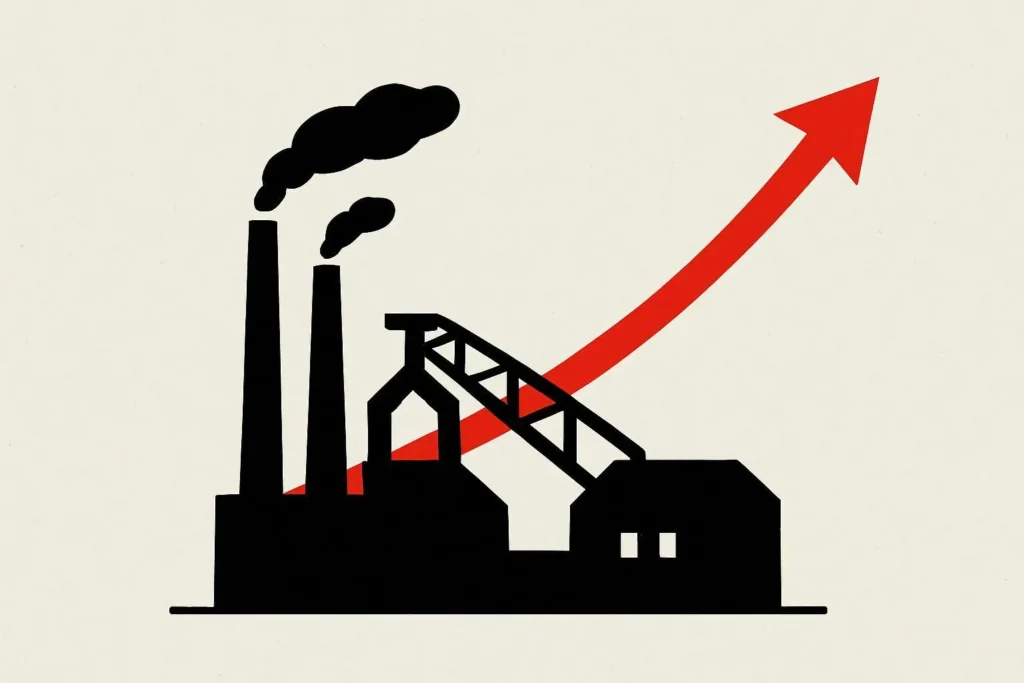Steel Futures Rally as Chinese Mills Rebuild Stockpiles

Iron ore and steel futures are once again on an upward trajectory, driven largely by Chinese steelmakers aggressively restocking raw materials. This buying spree comes despite Japan’s declining steel production and seasonal slowdowns in construction caused by extreme summer heat and heavy rainfall.
Industry analysts note that while Japan’s output has dropped sharply, China’s domestic demand remains strong enough to influence global metals prices, keeping the market active.
Why Prices Are Rising Restocking and Profit Margins
Chinese blast furnace mills have been replenishing their iron ore inventories after months of drawing them down. The turnaround in profit margins—thanks to a quick rebound in domestic steel prices during July—has given mills the confidence to ramp up purchasing activity.
On the Dalian Commodity Exchange and Singapore Exchange, iron ore futures have seen notable gains. Alongside iron ore, coking coal contracts and finished steel products such as rebar and stainless steel have also moved higher.
However, there’s a catch:
- Production cuts in northern China are expected, partly to curb emissions and manage inventories.
- Harsh summer weather has slowed down construction activity, causing stockpiles to grow.
Japan’s steel industry faces decades of low output.
While China’s mills are powering ahead, Japan’s steel sector is bracing for its weakest annual production since 1968. The slump is being driven by:
- Falling global steel prices
- Rising competition from cheaper Chinese exports
- US trade barriers, especially tariffs on automobiles, which indirectly reduce demand for steel
This contraction in Japanese steel output underscores the shifting balance of power in global metals markets, with China’s influence continuing to grow.
Global Metals Outlook Volatility Ahead
Despite seasonal slowdowns in construction, Chinese demand for steel and raw materials remains the main driver of metals prices worldwide. Key market trends include:
- Rebar and stainless steel futures remain resilient despite weather disruptions.
- Global coking coal prices are benefiting from increased steel production in China.
- Export competition from China is squeezing producers in other countries.
With China’s production policies, environmental regulations, and demand cycles all playing a role, iron ore prices and related commodities are expected to stay volatile in the coming months.
The Bigger Trade Picture Policies Shape the Market
The current steel market highlights a larger reality: global trade divides are deepening.
- Chinese exports are reshaping competitive dynamics in Asia and beyond.
- Protectionist measures, such as US tariffs, are influencing supply chains and market pricing.
- Countries dependent on steel exports—like Japan—are struggling to adapt.
For investors, traders, and industry stakeholders, staying ahead means closely tracking policy decisions, inventory trends, and demand signals from China’s industrial sector.
Key Takeaways
- China’s steel mills are the primary force behind the latest iron ore price rally.
- Restocking activity is supported by improved profit margins and domestic price recovery.
- Japan’s steel sector faces a historic downturn amid global competition and trade barriers.
- Expect continued volatility in global metals markets as demand, policy, and weather patterns shift.
Also CheckOut: GPT-5 OpenAI’s Most Advanced AI Model Yet



One thought on “China’s Steel Mills Drive Iron Ore Prices Up Again”